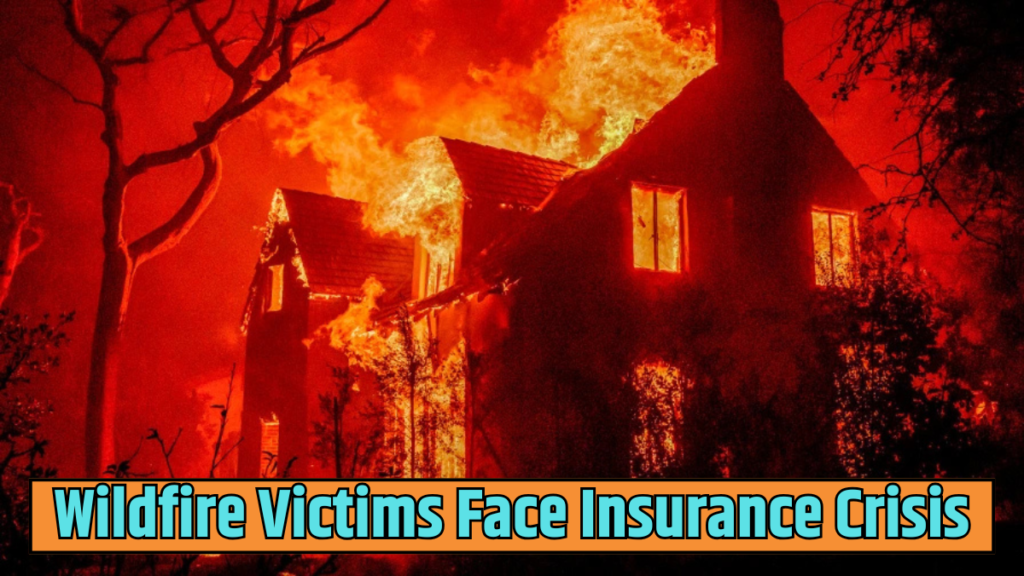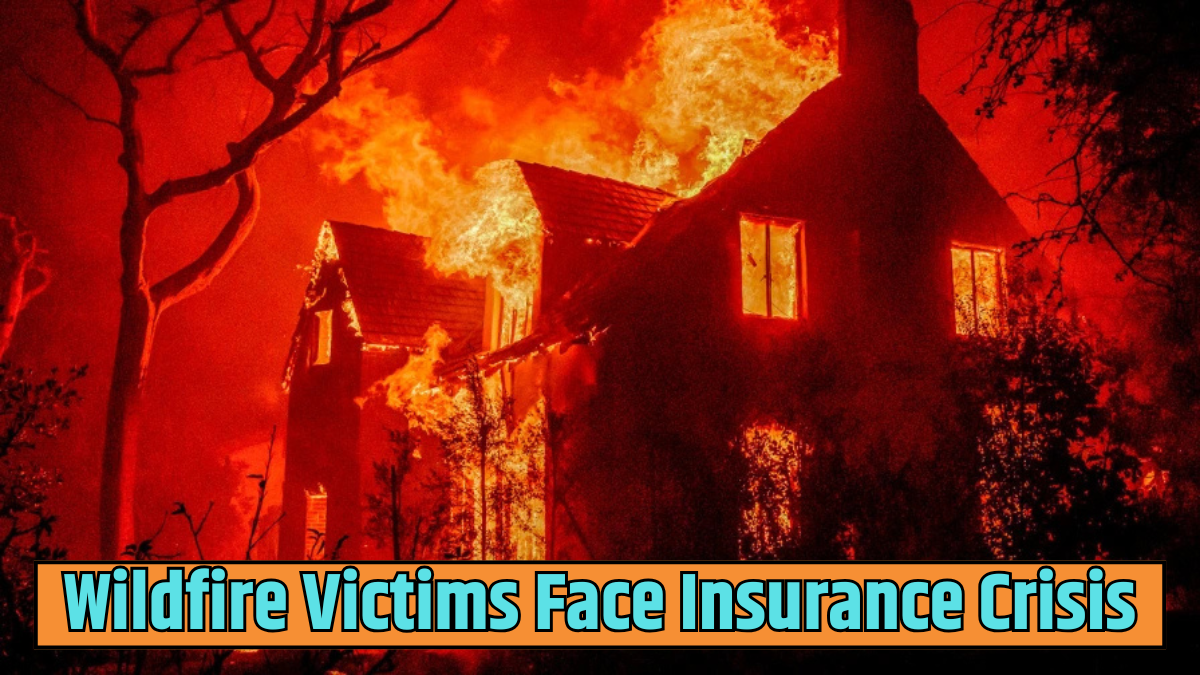Wildfires, once seen as seasonal natural disasters, are increasingly becoming a year-round concern. The United States, particularly California, has experienced some of the most devastating wildfires in history, leaving thousands of homeowners struggling to rebuild their lives. Beyond the immediate destruction, a less visible crisis looms: a growing insurance crisis that threatens to reshape housing markets and create widespread economic instability.
🚨 Mike V🚨 Mike Vrabel Agrees to Become Patriots’ Head Coach 🚨 rabel Agrees to Become Patriots’ Head Coach 🚨

BREAKING: Mike Vrabel Hired as Head Coach by the New England Patriots
Wildfires: A Costly Natural Disaster
The wildfires sweeping across California are not only a human tragedy but also a financial one. These disasters rank among the most expensive natural calamities in U.S. history. Homeowners are filing insurance claims in record numbers, trying to piece their lives back together. However, for many, the path to recovery is fraught with challenges.
Elisha Cuthbert’s Net Worth 2025 , Husband, 2 Sons, Age, Career &
The Insurance Crisis in California
California has long been at the forefront of the wildfire crisis, and the state’s insurance market is bearing the brunt. The crisis has been years in the making, exacerbated by the increasing frequency and severity of wildfires.
Rising Insurance Premiums
After the 2018 Camp Fire in Northern California’s Butte County—the deadliest and most destructive wildfire in state history—insurance premiums soared. Many major insurance carriers have since scaled back their fire coverage or stopped writing new property insurance policies in California entirely.
State Farm, California’s largest provider of homeowners insurance, announced in 2023 that it would no longer accept new applications from residents. The company cited rapidly growing catastrophe exposure as a primary reason. Other insurers have followed suit, leaving thousands of homeowners without coverage.
Homeowners in Crisis
For families affected by wildfires, the crisis extends beyond the physical destruction of their homes. Many find themselves without fire insurance, either because their policies were canceled or because premiums became prohibitively expensive.
One homeowner shared their frustration:
“These insurance people decided to cancel their fire coverage, and now we’re going through this without any help.”
This sentiment is echoed by countless others who are struggling to navigate the complexities of the insurance system during an already traumatic time.
State Intervention: Temporary Relief
In response to the crisis, California’s insurance commissioner has issued a one-year moratorium to protect homeowners. This measure suspends pending non-renewals and cancellations for homeowners affected by wildfires. While this provides temporary relief, it does not address the underlying issues within the insurance market.
A National Problem
California’s insurance crisis is not an isolated issue. A Senate Budget Committee investigation found that climate change-driven extreme weather events are causing similar challenges across the country. States like Florida, Louisiana, and North Carolina are also experiencing increasing non-renewal rates and skyrocketing premiums.
The report warns of a potential ripple effect, with the insurance crisis spilling over into the housing market. Communities where insurance becomes unaffordable or unavailable may see property values plummet, reminiscent of the 2008 housing crash. This could lead to broader economic instability, particularly in regions prone to natural disasters.
Climate Change: An Economic Threat
Climate change is no longer just an environmental issue—it is an economic one. As extreme weather events become more frequent and severe, they are creating financial challenges that extend far beyond the immediate aftermath of disasters.
Economic Impacts of the Insurance Crisis
- Declining Property Values
Homes in high-risk areas are becoming less valuable as insurance becomes harder to obtain. Potential buyers are reluctant to invest in properties without adequate coverage, driving down prices and creating economic stagnation in affected regions. - Housing Market Instability
The inability to secure affordable insurance could lead to a housing crisis. Homeowners may default on mortgages if they cannot rebuild or sell their properties, creating a domino effect throughout the economy. - Increased Costs for Taxpayers
Without private insurance options, more homeowners are turning to state-run programs like California’s FAIR Plan. While these programs offer a safety net, they rely on taxpayer funding, potentially increasing financial burdens for residents.
California’s FAIR Plan: A Safety Net
The California FAIR Plan is a private stop-gap insurance program designed to provide fire coverage for homeowners who cannot obtain it through traditional insurers. Recently, the program has faced criticism and misinformation about its ability to pay claims.
In response, a FAIR Plan spokesperson reassured homeowners:
“We have prepared for disasters like this and intend to keep our commitment.”
While the FAIR Plan offers a lifeline for many, it is not a long-term solution. The program is designed as a last resort and does not provide comprehensive coverage, leaving gaps that homeowners must address through additional policies.
A Call for Comprehensive Solutions
The insurance crisis underscores the urgent need for systemic change. Policymakers, insurers, and communities must work together to address the root causes of the problem.
Potential Solutions
- Incentivizing Risk Reduction
Governments and insurers can offer incentives for homeowners to implement fire-resistant measures, such as clearing brush, using fire-resistant materials, and installing sprinkler systems. - Expanding Insurance Options
State and federal programs can provide subsidies or reinsurance options to encourage private insurers to re-enter high-risk markets. - Addressing Climate Change
Long-term solutions must include efforts to mitigate climate change. Reducing greenhouse gas emissions and investing in sustainable practices can help decrease the frequency and severity of extreme weather events. - Educating Homeowners
Public awareness campaigns can help homeowners understand their insurance options and take proactive steps to protect their properties.
The Road Ahead
The wildfire insurance crisis is a complex issue with no easy solutions. However, it is clear that action is needed to prevent further economic and social fallout. As wildfires continue to devastate communities, the ripple effects will be felt far beyond the immediate areas of impact.
By addressing the crisis head-on, California and other affected states have an opportunity to build a more resilient insurance market and protect homeowners from future disasters. Until then, families across the country will continue to face uncertainty as they rebuild their lives in the wake of natural disasters.
Hi, my name is Pandit Katvate. I am an experienced blogger and YouTuber with more than five years of experience. Here on https://popglare.com/en you will get all the trending news and celebrity gossip of Hollywood.

